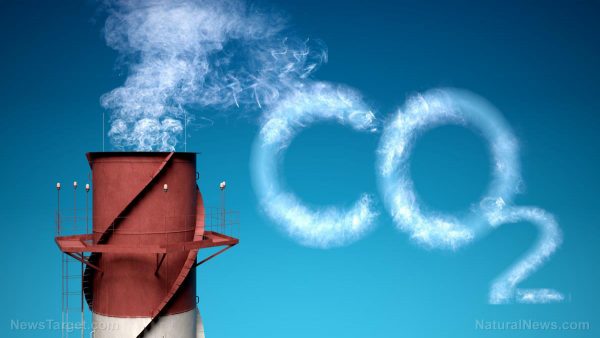
MIT climate scientist: Believing that CO2 controls the climate is like “believing in magic”
Monday, May 08, 2017 by Tracey Watson
http://www.libtards.news/2017-05-08-mit-climate-scientist-believing-that-co2-controls-the-climate-is-like-believing-in-magic.html

The commonly accepted narrative is that global warming is settled science, and that at least 97 percent of scientists agree that this warming, caused by CO2 emissions, is pushing mankind to the brink of extinction. With the mainstream media relentlessly reinforcing this belief, anyone who dares to question this theory is made to look and feel like a fool. Is it really true, though, that global warming being caused by CO2 is an undisputed fact?
In truth, there are many highly respected scientists who do not accept this theory as fact. Though their voices have to a large extent been drowned out by the incessant drone of the mainstream media, they are easily found if you search for them.
One of the most outspoken of these voices is that of Richard S. Lindzen, the Alfred P. Sloan professor of meteorology at MIT’s Department of Earth, Atmospheric and Planetary Sciences. Prof. Lindzen is the highly respected recipient of multiple awards, including the AMS’s Meisinger and Charney Awards, the AGU’s Macelwane Medal, and the Leo Huss Walin Prize. He is a member of the National Academy of Sciences and the Norwegian Academy of Sciences and Letters. He is also a fellow of the American Academy of Arts and Sciences, the American Association for the Advancement of Sciences, the American Geophysical Union and the American Meteorological Society. His credentials, which are too lengthy to detail in this article, make him a scientist well worth listening to.
In an article for Climate Depot, Prof. Lindzen explains why he believes that the commonly repeated mantra that 97 percent of all scientists agree on the global warming theory is simply not true. He notes that when scientists are asked whether they agree that “CO2 levels in the atmosphere have increased, that the Earth has been warming (albeit only a little) and that man has played some part,” most of them will agree that this is all true. However, their response to those questions is not an indication that they believe climate change to be an indicator of impending doom. (RELATED: Get the real facts about climate change at ClimateScienceNews.com)
And Lindzen notes that even the United Nations Intergovernmental Panel on Climate Change, created by the UN to provide ‘authoritative’ assessments of man-made climate change, doesn’t agree with the claim that humans are the main cause of such change.
He also notes that most scientists studying climate change are now reliant on government funding, and as such, are not inclined to rock the boat or risk their careers by opposing the global warming narrative. Indeed, as Prof. Lindzen says, “Recipients of this funding would feel obligated to support the seriousness of the problem. Certainly, opposition to this would be a suicidal career move for a young academic.”
The professor calls the presumption that any warming or increase in CO2 is bad and proof of imminent disaster “ridiculous.” He also explains the often quoted statistics about “the warmest years on record,” as a response to the warming episode experienced by the Earth from 1978 to 1998. Since the weather has remained pretty consistent ever since, all the years since 1998 are always referred to as the “hottest on record.”
In an opinion piece for the Wall Street Journal back in 2009, Prof. Lindzen drew attention to another important issue regarding the “science” of global warming, when he noted that “the measurement used, the globally averaged temperature anomaly (GATA), is always changing. Sometimes it goes up, sometimes down, and occasionally—such as for the last dozen years or so—it does little that can be discerned.”
While he acknowledged that scientists generally agree that the GATA has increased by about 1.5 degrees Fahrenheit since the middle of the 19th century, he stressed that the quality of the data is poor, and that since changes are very small, they are easily manipulated in either direction.
According to Prof. Lindzen, our planet experienced a minor ice age between the 15th and 19th centuries, and it was the emergence from this ice age that made global temperatures begin to increase. The end of this ice age happened to coincide with the beginning of the industrial era, which led to an increase in emissions of greenhouse gasses like CO2, nitrous oxide and methane.
While it is generally accepted that CO2 levels have increased by about 30 percent since that time, even if those levels were literally to double, the original balance between incoming and outgoing radiation would only be changed by about 2 percent.
Prof. Lindzen lists these and many other reasons for his statement that believing in man-made global warming “is pretty close to believing in magic.”
See Truth.news for more truths that the status quo refuses to acknowledge.
Sources:
Tagged Under: Tags: climate change, global warming, hoax, MIT, Prof. Richard S. Lindzen





